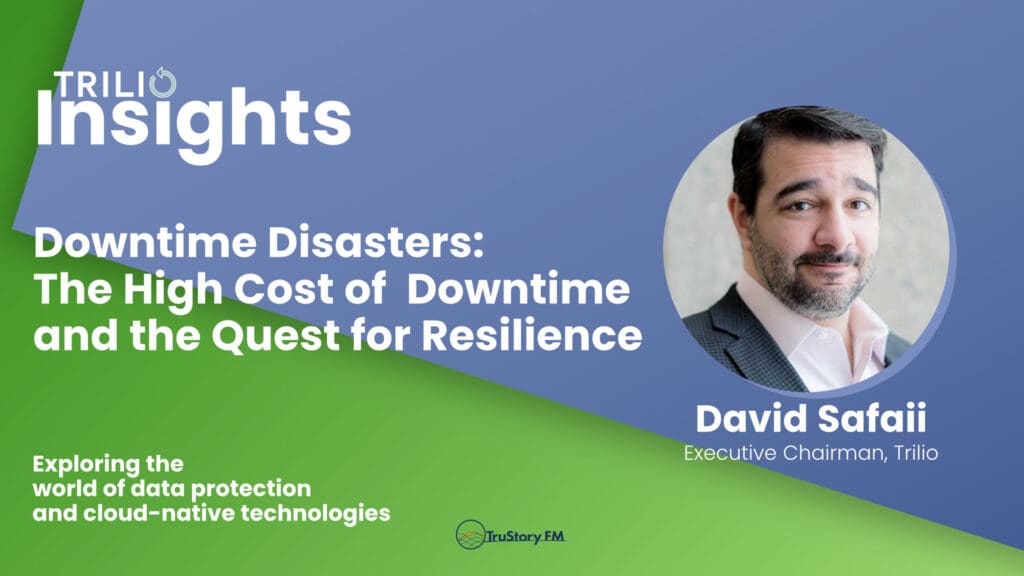In a world where businesses rely on the constant flow of data and the uninterrupted availability of applications, IT downtime has become an unavoidable reality with far-reaching consequences. This week, Pete Wright sits down with David Safaii, Executive Chairman at Trilio, to explore the causes, consequences, and solutions to one of the most pressing challenges facing businesses in the digital age.
Safaii explains that while the public often hears about catastrophic outages, smaller disruptions occur more frequently than one might think. These outages can be caused by a variety of factors, ranging from hardware failures and network issues to human errors and cyber attacks. The impact of these outages can be staggering, with the average length of an interruption after a ransomware attack in 2022 being 24 days.
The financial costs of downtime are equally alarming. Safaii cites a report stating that the Fortune 500 lost about $1.5 trillion a year in unplanned downtime. However, he emphasizes that the consequences extend beyond just dollars and cents. “In addition to the people in that building, you have to turn people away from the outside. They can’t receive the treatment they require. That is the cost of downtime. You can’t put a number on that,” Safaii says, highlighting the potential impact on healthcare facilities.
Safaii also highlights the reputational damage that companies can suffer due to outages, noting that trust and consistency are key to building brand loyalty. When outages result in data loss or prolonged disruptions, customer satisfaction and trust can be severely impacted.
So, what can businesses do to mitigate these risks? Safaii stresses the importance of having a well-tested disaster recovery plan in place. However, he notes that many organizations fall short in this area, with only 31% testing their DR plan once a year. “Testing can be easy and you can automate it if you’ve got the right tools,” he says, encouraging businesses to prioritize regular testing.
Safaii also dispels the notion that relying on public cloud providers is enough to ensure data protection and application availability. “The number of times I’ve had conversations about this, where they say, oh, we just charged our public cloud provider. You know, they’re there to provide you with the infrastructure to run your applications. They’re not there to provide you with application or data protection,” he emphasizes, urging businesses to take responsibility for their own disaster recovery measures.
Looking to the future, Safaii encourages businesses to be proactive in their approach to disaster recovery. By investing time, processes, and technology in mission-critical applications, companies can minimize the impact of downtime and build resilience in the face of an ever-evolving landscape of threats. “If you’re planning properly and you’re prepared, the more you put in, the more you’ll get out.”
Links & Notes
- Backup & Recovery from Trilio.io











